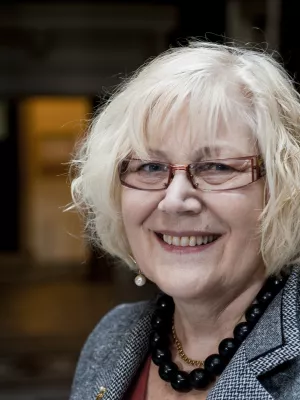
Ingalill Rahm Hallberg
Professor emerita

Comparison of patients undergoing enhanced external counterpulsation and spinal cord stimulation for refractory angina pectoris.
Author
Summary, in English
INTRODUCTION: As more patients survive coronary events, the prevalence of patients with refractory angina pectoris is increasing. The aim was to evaluate the effects of enhanced external counterpulsation (EECP) and spinal cord stimulation (SCS) and compare with optimal medically treated patients with refractory angina. METHODS: 153 patients with refractory angina were treated with either EECP, SCS, or were retained on their pharmacological treatment (control). Glyceryl trinitrate usage and Canadian Cardiovascular Society classification were registered at baseline, 6 and 12 months after therapy. RESULTS: Both EECP and SCS reduced the angina as compared with controls (P<0.001). Patients treated with EECP showed a more effective reduction as compared with SCS patients (P<0.05). Both treatments resulted in significantly decreased glyceryl trinitrate usage at 6 and 12 months follow-up (P<0.001). The nitrate consumed was unaltered in the controls. DISCUSSION: The results from this study show that both EECP and SCS therapy reduce angina in patients with refractory angina pectoris; the response to EECP was slightly more effective than that to SCS. Thus, EECP can be used as an alternative treatment for patients not responding to electrical stimulation. The beneficial effects in the treated groups were maintained during the 12 months follow-up period.
Department/s
- Department of Health Sciences
- Medicine, Lund
Publishing year
2008
Language
English
Pages
627-634
Publication/Series
Coronary Artery Disease
Volume
19
Issue
8
Links
Document type
Journal article
Publisher
Lippincott Williams & Wilkins
Topic
- Nursing
- Other Clinical Medicine
Status
Published
ISBN/ISSN/Other
- ISSN: 0954-6928

